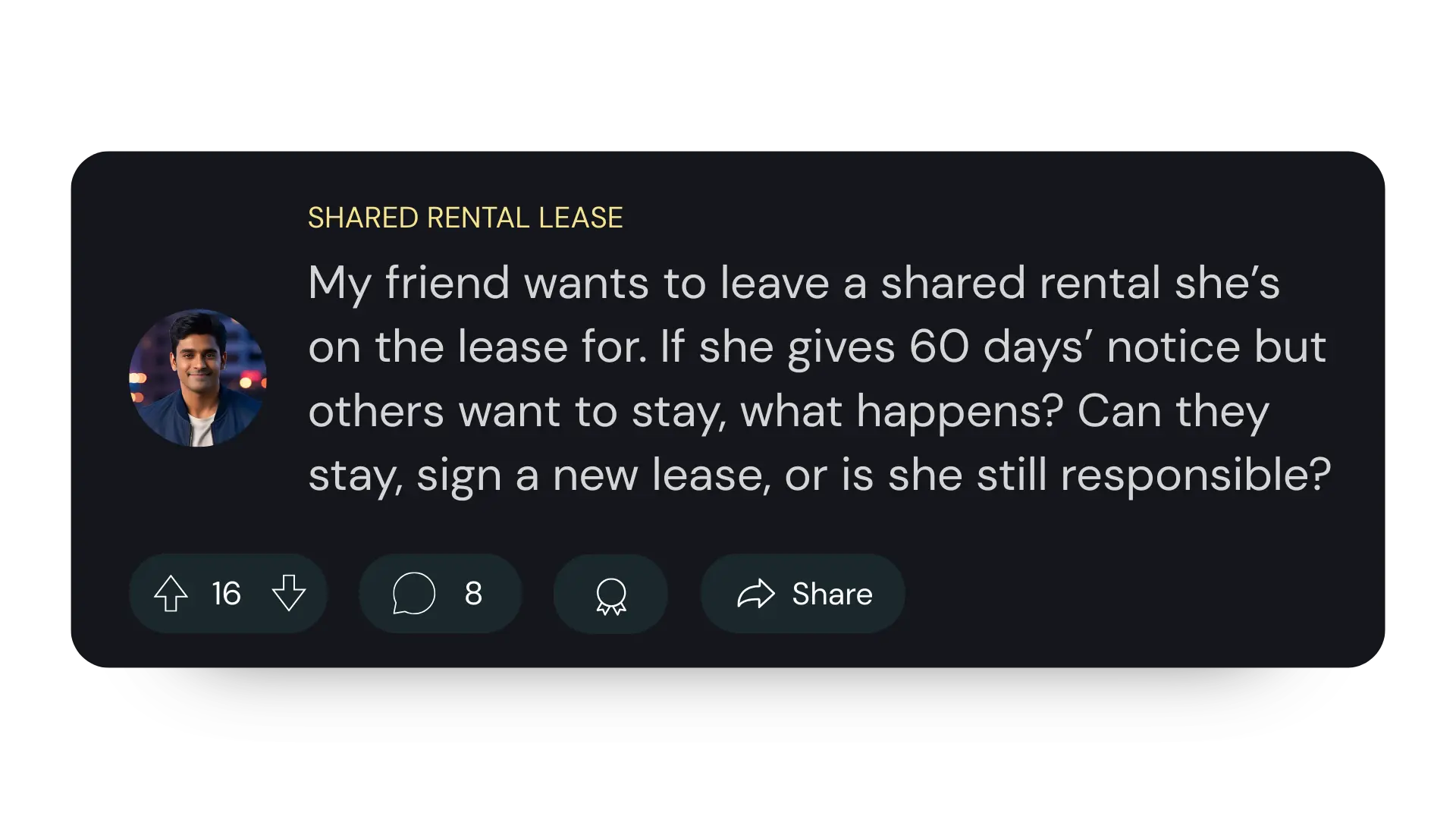Living in a shared rental with roommates is a great way to save on housing costs in Toronto and across Ontario. But what if you want to move out before your roommates do?
Leaving a shared rental can be tricky — especially if you’re on the lease — but it’s absolutely possible with the right steps.
Here’s exactly how to move out of a shared lease properly, protect yourself legally, and avoid unnecessary issues with your landlord or roommates.
How to Move Out of a Shared Rental in Ontario
Step 1: Check Who’s on the Lease
Before you do anything, you need to understand your legal position.
- If you’re the only tenant listed on the lease: You have full authority to end the tenancy by giving notice, even if other roommates live with you.
- If you and your roommates all signed the lease together: You’re all jointly responsible. Leaving early without a proper transfer can leave you financially liable.
Action:
→ Find and review your signed lease agreement. Confirm whether you’re listed alone or alongside your roommates as tenants.
Step 2: Decide if You’re Ending, Assigning, or Subletting
Depending on your situation, there are a few ways to leave legally:
- Give Notice to End the Lease (Primary Tenant Only):
If you’re the sole leaseholder, you can give your landlord 60 days’ notice (aligned with the rental period) to end the lease. - Assign Your Lease (If Joint Tenants):
You can transfer your lease to someone else, with landlord approval. Once assigned, you’re no longer responsible for rent or damages. - Sublet Your Room:
You find someone to temporarily take over your room. However, you’ll still stay legally responsible for the lease until it officially ends.
👉 Want more details?
Check out this guide on how to end a tenancy properly in Ontario for more options depending on your situation.
Step 3: Give Proper Notice
If you’re ending your tenancy or planning an assignment/sublet, Ontario law requires you to provide written notice to your landlord.
- Use the correct forms (for example, N9 – Tenant’s Notice to End the Tenancy if ending your lease).
- Include your intended move-out date (it must be at least 60 days ahead and at the end of a rental period, like the end of a month).
Important:
If you’re assigning or subletting, you’ll also need to request the landlord’s permission in writing — they must respond within a reasonable timeframe.
Step 4: Communicate with Your Roommates Early
Even if you have the legal right to leave, it’s a good idea to be upfront with your roommates.
Let them know:
- When you plan to move out
- Whether you’re assigning the lease or subletting
- Whether they’ll need to sign a new lease (if applicable)
This will help avoid misunderstandings and give them time to plan.
Need a new place after moving out? Explore our latest rental listings across Toronto! See what’s available here.
Step 5: Get Everything in Writing
To protect yourself:
- Document your notice to the landlord
- Save any written agreements about lease transfers, new roommates, or move-out conditions
- Keep copies of any landlord approvals for assignments or sublets
Written proof can prevent issues if there are disputes after you leave.
What Happens If You Leave Without Proper Steps?
Leaving a shared rental without ending the lease properly can cause serious problems:
- You might still be responsible for rent and damages.
- The landlord could take legal action against you.
- Your roommates might be forced to cover your share of the rent.
Following the right legal process protects your finances, your rental history, and your roommates’ living situation.
Final Thoughts: Moving Out the Right Way
Leaving a shared rental in Ontario takes more than just packing up your stuff.
Understanding your lease, following the legal steps to give notice, and coordinating with your landlord and roommates can make the process smooth — and keep you out of legal trouble.
If you’re unsure whether you should assign, sublet, or end your tenancy, check this detailed guide or speak to a rental advisor.
✅ With the right plan, you can move forward confidently — without burning bridges or risking your financial security.
Quick Checklist for Moving Out of a Shared Rental:
- Review your lease and legal obligations
- Choose the right option: end, assign, or sublet
- Give proper written notice
- Communicate openly with roommates
- Secure landlord approvals if needed
- Keep everything documented




